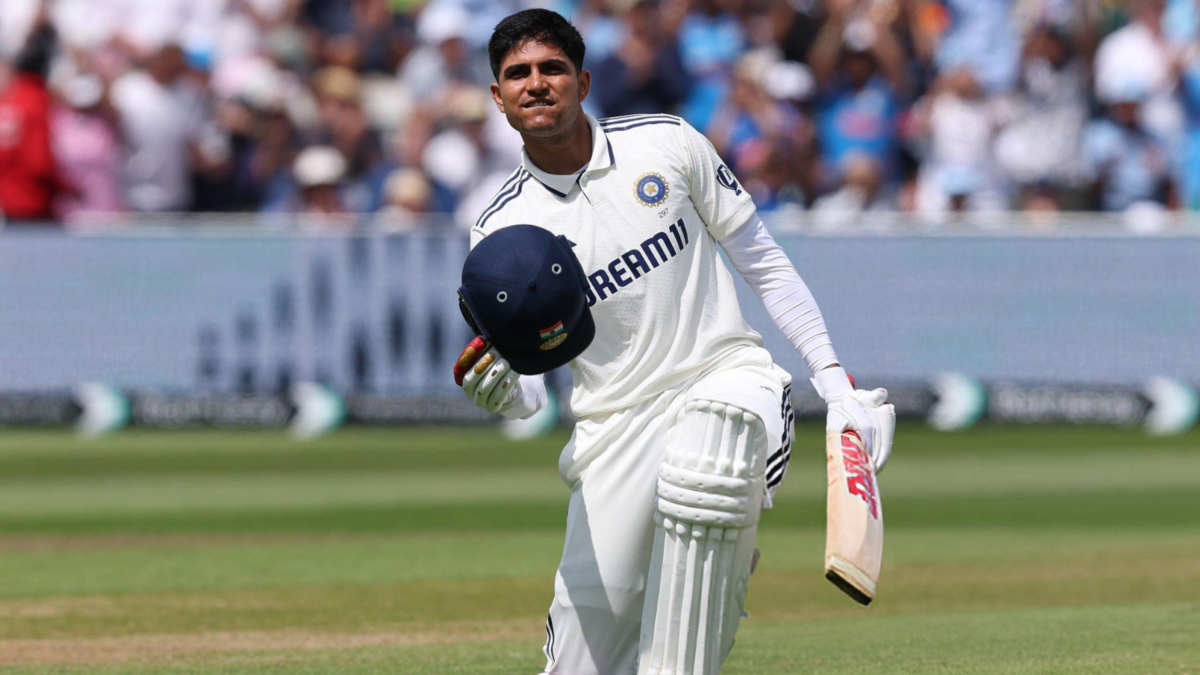
This fresh spell must stretch through the years ahead for Gill.

35.05 – Shubman Gill’s average before the England series across 32 Tests. 14.66 – His average from six innings in England. 27.53 – His average in 28 outings away from home.
At this moment, he was still going to get an extended run, and rightly so. But that wasn’t the only burden he inherited. Along with it came a weightier mantle: the most prestigious yet colossal undertaking of all – captaining the Test side, that too in a transition.
Naturally, murmurs were swirling around his appointment. His own spot had been anything but secure. He had just endured a tough Australia tour, averaging a tepid 18.60, and was also dropped for the Boxing Day Test.
That was not it, though. Gill also decided to move to No.4 – his third different batting position in a career still in its early chapters. And with it came the exacting expectations of a Test No.4, held by India’s best batter in the previous decade, Virat Kohli, who himself succeeded the legendary Sachin Tendulkar.
ALSO READ:
With all this behind him, there was only one way left to go: up, and he did, right away. On his maiden outing as Test captain and No.4, Gill cracked a flawless ton, reaching there with an authoritative cover drive, as if he was making a statement of the new dawn, which had traces from the previous one, but makings of something entirely his own. This was just a start.
In the next Test, Gill scored a record 430 runs, the second-highest run tally, and became only the second batter with two 150+ scores in a Test. There were four century partnerships for India in Edgbaston, and he was part of all of them. He was at the crease for a whopping 752 minutes.
The Bazballers had never bowled as much to a batter in a Test before. ‘Boring, boring’ were the chants from a frustrated British crowd when Gill, unflinched, continued to torment England players after scoring 150 in the third innings. Now, ‘boring’ is an interesting term, and it pretty much sums up how he has fared in the series.
Right from the first Test, Gill’s conscious effort has been to bat as much as possible and minimise false shots, even if they mean playing rather slowly in an otherwise quick-scoring Test series. Sure, the conditions are flat, but not everything is conditions, even if they rule the proceedings. There is plenty Gill did right; be it his front foot stride moving towards the pitch, standing slightly wider on the leg side to get his head on the off stump, or tackling incoming deliveries on the stump line, which have troubled him severely in the past.
Now, this is the boring part, doing it all over again and again. And if Gill has to keep scoring, he must be boring; he must embrace the monotony. Bore everyone with the runs so much that it loses novelty, big tons become frequent, and failure barely fits the script.
All those greats have a boring brilliance, so predictable that even casuals know who has been dominating. This is the time for him to become the poster boy for the casuals. That will be his biggest achievement.
And that is always expected of him. Right from the age-group tournaments, Gill has been a prolific run-accumulator, with an appetite for big runs. His First Class average was a staggering 68.78, only second to Vinod Kambli’s 88.73 when it comes to the highest average at the time of his maiden Test.
He even continued it for India in the ODI format, where no one has been as consistent as him since his regular run. Unfortunately, he couldn’t replicate the same success in the longest format as early, but the pitches were also so extreme that the leap from domestic to international wasn’t smooth. Most batters struggled, so it’s harsh to blame Gill much.
But then that’s where the best ones stepped up as well. Virat Kohli scored all the tough runs during his peak, Joe Root is a run-scoring machine, while Steve Smith is never out of form. That’s the benchmark Gill must set for himself.
This fairytale start shouldn’t resemble his Test journey so far: dazzling in bursts but lacking steadiness. He has often relied on temporary tweaks that have failed to hold up over time. No.4 has been all about continued success, and now that Gill has chosen the role, he must honour the tradition.
The real test of Gill’s growth will come as this series wears on, and even more in the ones that follow. He has begun this new chapter impressively, but then again, so did his Test career. This fresh spell must stretch through the years ahead, even if that demands being unflinchingly boring.
For more updates, follow CricXtasy on Facebook, Instagram, Twitter, Telegram, and YouTube.